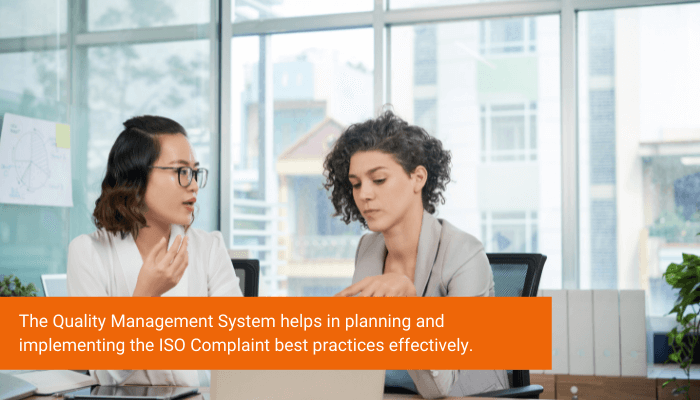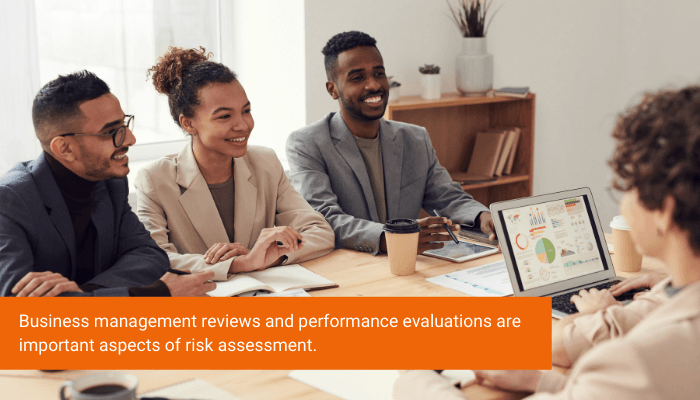ISO 9001:2015 Certification is one of the most in demand and helpful ISO Standard. Across various industry sectors and organizations, the Quality Management System has significant applications. The Quality Management System benefits the organization in multiple ways.
Risk-Based Thinking and Action is a relatively new add-on to the ISO 9001:2015 Certification. In modern times, risk-based prevention is a must-have component in every organization’s strategy.
Risk-Based Approach to Quality Management Standard
The Quality Management System Standard has a dedicated module for Risk-Based Thinking and taking the required corrective actions.
The risk-based approach covers the following areas:
- Identifying the risks and op[pprtunities
- Planning actions to address the risks
- Quality Management System Implementation
- Performance Evaluation
Implementing the QMS with a Risk-Based Approach will enable organizations to take action before the occurrence of any vulnerability in the system.

The risk-based approach provides opportunities for improvement and the businesses can make more strategic decisions. Quality Management Systems are transforming and can handle risk assessment effectively.
Steps in the Risk Based Approach to Quality Management
The main objective of QMS is to streamline the business operations at the same time reduce risk in the organization. The ISO 9001:2015 standard compliance requires the business to meet the required quality standards as well as reduce the risk associated with the company.
1. Identifying Risks and Opportunities
The gap analysis will help to a great extent to identify the risks associated with the organization system. Categorize the risk into various sections such as:
- Issues that will affect organizational culture, knowledge, and performance
- Functions affecting product & service delivery
- Compliance for suppliers and external vendors
The ISO Auditors must log all the observations for each scenario and map it with the ISO 9001:2015 guidelines to check for compliance.
2. Analyzing the Risks
ISO Auditors must check the business systems periodically to record the vulnerabilities. Identify any non-conformity from the ISO 9001 guideline and take the corrective action accordingly.
Carry out periodical and complete risk assessment to monitor, measure, analyze, and evaluate risk and opportunities.

Record the Quality Management System performance the right way. It will help in streamlining the business processes as per the ISO guidelines.
The organization must adapt to the risk-based thinking approach to maintaining the smooth functioning of the operations.
3. Planning and Implementing Actions
The Quality Management System helps in planning and implementing the ISO Complaint best practices effectively. keeping clear records of training, improvements, gaps identified, etc., helps in continuous improvements.
Risk assessment helps in planning the actions to address the risk effectively. The ISO best practices help to avoid risk and also eliminate the source of the risk. The ISO Auditors will prepare a checklist that will help to conduct the risk assessment the right way.
4. Implementing the Quality Management System
The ISO Auditor will conduct a gap analysis to identify the vulnerabilities in the current Management System.
The ISO best practices will be applied to the organizational system. The improvements made to the system must be recorded correctly. The QMS system will enable the organization to successfully streamline its business operations.
It will help increase business profitability by avoiding unexpected risks, It will speed up the business operations and gain business growth.
ISO 9001:2015 Standard and Business Implication
The ISO 9001:2015 Standard has a set of frameworks that will allow businesses to demonstrate their product and service quality.
The risk-based thinking was integrated with ISO 9001:2015 standard for a systematic approach. Organizations can make more informed decisions. The QMS System will enable risk assessment and quality best practices to mitigate risks.

The ISO 9001:2015 Standard empowers organizations to take a holistic approach toward continuous improvement of the business systems. It helps to enhance customer satisfaction and grow business.
Identifying Business Risk and Taking Action
Business management reviews and performance evaluations are important aspects of risk assessment. Organizations must implement ISO 9001:2015 Standard and appoint Quality Management Team to ensure the business operations follow the required compliance standards.
Taking the right corrective actions helps in mitigating the risks associated with the organization to a large extent.
Severity Assessment & Risk-Based Thinking
A severity Assessment is a vital exercise to identify the intensity of the risk. The ISO Auditor must conduct a periodic risk assessment and Quality Management System audit.
The risk-based thinking approach is a combination of risk analysis, assessment, identifying, and taking corrective action. It will help in reducing the risk by planning actions that will benefit the company in the future.
The Quality Management System along with the risk assessment module benefits organizations across all business sectors. It provides total control over the organizational business operations and effectively applies the practices of continuous improvement.
The ISO 9001:2015 Standard is a must-have Certification every organization must have to achieve business excellence both in the short and long term.
To know more about ISO 9001:2015 Certification cost and implementation process, talk to our team of expert ISO Consultants right away!
Contact Us: Aurion ISO Consultants



